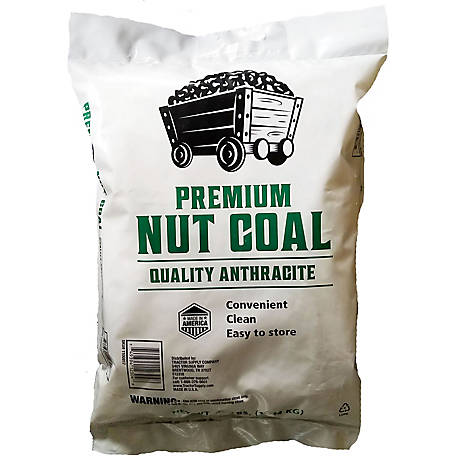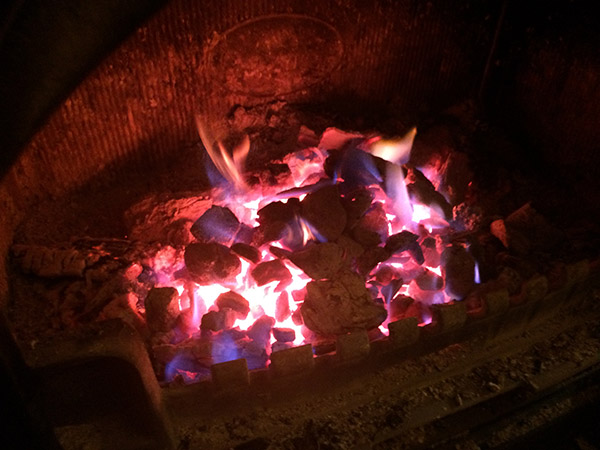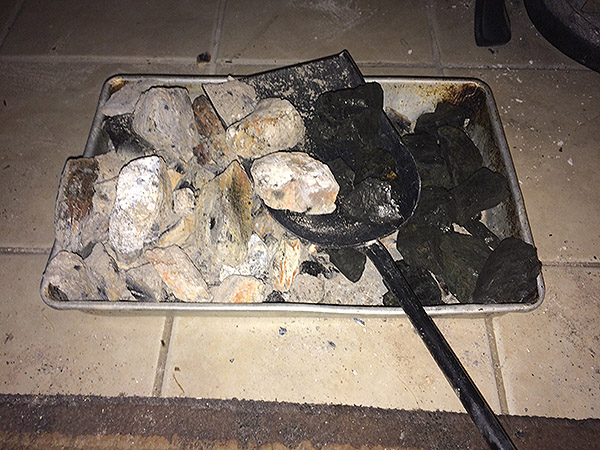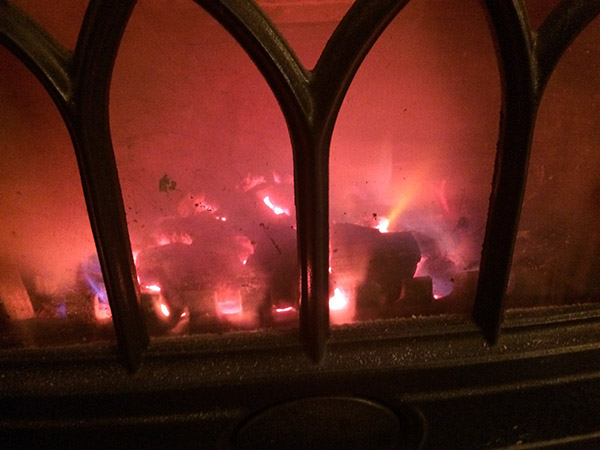
Could you burn coal in your wood stove as an alternate fuel? The answer is a qualified yes. As an experiment, I bought a bag of coal and gave it a try. Here is what I learned.
First, a little background on coal as a fuel. There are four main types of coal:
The Four Types of Coal
Anthracite is the most common coal sold for home heating. It is also the hardest coal. Dropped on a hard surface, anthracite rings and tinkles like chunks of glass. It gives the most heat per ton and relatively clean-burning. It is rare compared to other types of coal and more expensive to mine. But, it’s higher quality makes it the popular choice for home heating. If you go to Tractor Supply to buy coal, anthracite is most likely what they’ll carry.
Bituminous is much more common. It is not as hard as anthracite and does not burn as clean — hence it being a target of environmentalists. Because it is cheaper, it is usually what power plants burn.
Sub-Bituminous is also common. It is softer than bituminous. While it burns cleaner, it has a lower heat value so power plants have to burn more of it for the same power output.
Lignite is the softest coal — sometimes called brown coal because it can be brown rather than black. Lignite has the lowest heat value.
The reason I list the types and their uses, is because in a grid-down collapse scenario, you might come across softer coals scavenged from dead power plants or industrial sites. As such, it is good to know the differences.
Four sizes
Anthracite is sold in four chunk sizes: stove (or lump), nut, pea, and rice. The bigger the chunks, the longer they’ll burn, but the slower they will be to catch. Lump coal is better for large fireboxes. Rice coal catches fast but is quickly consumed too. I bought “nut” coal. The chunks varied quite a bit from bigger than a golfball on down to rice. Most of them were the sizes of various nuts: almond to walnut.
Slow To Burn
Getting a coal fire started from scratch means first starting a regular fire with paper and wood. Anthracite coal is very slow to combust. In fact, it can lay on top of a raging wood fire and look darned near fire-proof. It took a regular wood fire of logs to get the coal laid on top of it to start to burn. Anthracite needs a lot of heat to get it going.
Watch for Wetness
The bag of coal I bought had been stored outside in a covered bay. It was apparent that snow and rain got to the stacks of bags. Even though the coal was in plastic bags, water still got in. Coal is somewhat absorbent, so it can soak up some water and not look particularly wet. My anthracite may have been even more reluctant to burn because it had more water content. Be sure to store your coal where it cannot get wet.
Air From the Bottom
A major difference between a wood fire and a coal fire is where the air comes from. The way my Jotul stove is designed, fresh air is fed into the firebox from the top, jetting down and around to create a sort of tumbling airflow across the logs. That’s fine for wood but not good for coal.
Coal stoves are designed to feed fresh air in from the bottom, beneath pile of burning coal. This way, the heat is greatest at the bottom. The chunks of coal glow red. The heat rises through the pile of coal, getting the upper chunks up to temperature.
My Jotul stove has an ash clean-out door below the fire grate. In wood-fire use, this always stays closed. While burning coal, I had to keep it open to feed air in from below. I could vary how “closed” the door was as a sort of throttle to create good ‘jets’ of blue flame coming up through the pile of coal. If I were going to burn coal regularly, I would have to rig up some better means to control how open or closed the ash door was.

Ash Fall
Another feature of a coal fire and its burn-from-the-bottom nature is that it makes ash right where the fire wants air. Lumps of coal form ash on their outsides. (see the photo below of fresh coal and left-over coal from the previous day’s fire) Left to itself, a coal fire will create a layer of ash on the grate and starve itself for oxygen. Stoves designed to burn coal have grate shakers to make the ash fall through and keep the air flowing.

My Jotul does not have a grate shaker. Using my L-shaped poker, I could rake up through the grate, going in through the ash clean-out. This knocked the accumulated ash free and kept the fire going. If I were going to burn coal longer term, I would rig up some sort of grate shaker to make that task less laborious.
Heat Value?
My Jotul was successfully able to burn coal. It seemed like it gave off more radiant heat than a wood fire. The coal did not heat up the iron sides of the stove as much as a wood fire. This might be due to the altered air flow. With the air coming in below and going up the chimney, the sides of the stove did not get as much heat. Overall, the Jotul heats the house better with wood, but then, that’s what it’s designed to do.
Conclusion
If in a grid-down situation, I had a shortage of wood to burn but came across a supply of coal, I could burn coal in my wood stove as an alternative. It would take some modifications to make it more practical. I don’t want to have to sit beside the stove and baby the fire to keep it going. After all, if the grid is down, I will have a lot of other things to do besides baby a fire. Still, it’s good to know what I would have to do if I had to.

Would coal work in your wood stove? Maybe. Check to see if you can create an updraft through the grate. My old wood stove did not. It was a flat bottomed firebox. Consider what modifications you might have to make to accommodate coal, like some way to shake the grate. If you can do those things, you might be able to use coal as an alternative fuel.
—

Thanks for the info. I’m doing my own experiment for the first time to see results. With your information, I have some small rebar and may make some kind of grate for bottom air flow. Just one of those things that I want to find out. Up in the woods in an emergency, a person needs to have many backup plans, just in case and for, you never know what to expect on a cold freezing day. Thanks. I’ll give input for further knowledge to others.